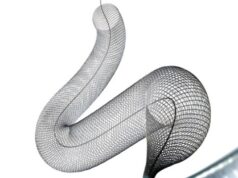Patrick Brouwer (Stockholm, Sweden) talks to BLearning at SNIS 2019 (22–25 July, Miami, USA) about some of the issues associated with early flow diverters and why there is “not a lot of understanding going on with flow diverters at the moment”.
The “biggest problem”, according to Brouwer, is that once you put the flow diverter in place there can be side-effects related to the endothelial overgrowth including stenosis and intimal hyperplasia. In Brouwer’s view, complications “are not flow diverter dependent, but technique dependent”.
The current efficacy of flow diverters “has to be better” and the current occlusion rate of 80% is “not ideal”, says Brouwer, who states that improvements are also needed in relation to the “predictability of placement of flow diverters, retrieveability and avoiding thromboembolic complications”.
Brouwer believes that a prospective database is needed to look at all flow diverters as a group rather than just focusing on individual devices in order to get better data and ultimately to see “how we can modify the risks in the future”.













